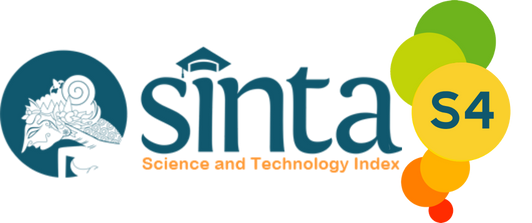ANALISIS VALENSI VERBA DALAM MANGA BARAKAMON
DOI:
https://doi.org/10.24036/omg.v5i2.626Keywords:
Valensi, Verba, MangaAbstract
Manga is a literary work that is in great demand by all circles, from young people to adults. In the manga, there are many sentences that use verb valence. Verb valence is the presence of verb-accompanying nouns or nouns in the syntax structure of a clause or sentence, which serves as an object, complement, or both. The verb contained in the sentence, must have a noun or nomina phrase behind it, which is called a transitive verb, then a verb that does not require the presence of a nomina or nomina phrase behind it is called an intransitive or untransitive verb. Barakamon manga is a manga that is in demand by the general public, anime enthusiasts, Japanese language learners, and students. In this study, researchers analyzed verb valence in the Barakamon manga. This study aims to determine the type of verb valence in the Barakamon manga. This type of research is qualitative research using descriptive methods. The data in this study are verb-valence sentences contained in the Barakamon manga. The source of the data taken is a sentence in the manga Barakamon Act.1. This research uses Verhaar's theory. Based on the results of the study, three types of verb valence were found, namely verbs with one valence there were 48 data, verbs with two valence there were 23 data, three-valence verbs were not found, with syntax roles and functions contained in sentences.
References
Handayani, Ari Edi. 2007. Valensi Verba dalam Ame no Hi Bunko 1. Surabaya: Universitas Negeri Surabaya.
Kridalaksana, Harimurti. 2001. Kamus Linguistik. Jakarta: PT Gramedia Pustaka Utama
Rohim, Miftahur. 2013. Analisis Kontrastif Bahasa Indonesia dan Bahasa Arab berdasarkan Kala, Jumlah, dan Persona. Jurnal Sastra Indonesia. Semarang: Universitas Negeri Semarang.
Sudjianto dan Ahmad Dahidi. 2014. Pengantar Linguistik Bahasa Jepang. Jakarta: Kesaint Blanc.
Sutedi, Dedi. 2003. Dasar-dasar Linguistik Bahasa Jepang. Bandung: Humaniora Utama Press (HUP).
Verhaar,J,W,M. 1999. Asas-asas Linguistik Umum. Yogyakarta: Gajah Mada University Press.
Wedhawati, dkk. 2006. Tata Bahasa Jawa Mutakhir. Yogyakarta: Kanisius.









